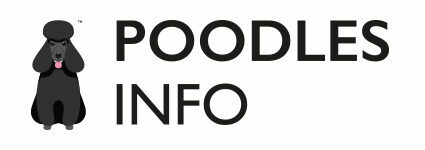Understanding Poodle Coat Type Variations
In the fascinating world of poodles, one distinct characteristic which sets this breed apart is its unique coat. Poodles are revered for their luxurious and diverse types of coat, ranging from curly to wavy and everything in between. This diversity, however, isn’t just a matter of aesthetics. It has significant implications on the poodle’s health, lifestyle, and care requirements. With this in mind, this examination aims to provide a comprehensive overview of the different types of poodle coats, shedding light on the distinguishing traits of each variation, the genetic factors that influence these characteristics, and common misconceptions surrounding them.
Basics of Poodle Coat Types
Poodles have been renowned and adored for their unique coats.
As a breed, Poodles can be seen in a wide range of colors, sizes, and, most notably, coat types. The typical Poodle coat is dense, curly, and non-shedding. However, it’s crucial to understand that not all Poodles’ coats are identical. Variations can occur, and these are primarily due to genetic influences, individual traits, and even dietary factors.
Recognize Poodle Coat Types
There are generally three recognized Poodle coat types: Hair, Wool, and Cord. The Hair type is typically seen in the rarest of Poodles, the Mi-Ki. It’s incredibly soft and tends to be straight to wavy, differing vastly from the traditional Poodle coat. Wool type coats possess a tight curl pattern, similar to a lamb’s wool. This type of coat is common among many Poodle crossbreeds, like Labradoodles and Goldendoodles. The Cord type, often associated with the Corded Poodle, differs in that the curls mature into cords or dreadlocks that can lengthen considerably if allowed.
Distinguishing Traits of Each Coat Variation
Understanding the primary identifications of each coat type is a vital aspect of working with Poodles. The Hair type coat is low-maintenance, with minimal matting and tangling compared to other Poodle coats. The Wool type coat requires regular grooming to prevent matting and should ideally be clipped every six to eight weeks. Shearing the Wool coat can help ensure that the texture remains soft and that the coat remains healthy. Lastly, the Cord type is high maintenance and requires considerable effort to maintain its unique look. To keep the cords healthy and tidy, regular bathing and thorough drying are essential.
Genetic Influence on Coat Characteristics
The characteristics of a Poodle’s coat are primarily determined by its genes. From color to texture, many traits are inherited from the parent dogs. For instance, two dogs with Wool type coats are likely to produce puppies with the same type of coat. Likewise, a Poodle with a Hair type coat won’t suddenly produce puppies with a Cord type coat. It’s important to note, however, that genetics can be unpredictable and variations can still occur.
Common Misunderstandings About Poodle Coats
There are many misconceptions surrounding Poodle coat types. One of the most common is the belief that all Poodles are hypoallergenic because of their unique coat. While it’s true that Poodles are less likely to cause allergic reactions compared to other breeds, they are not completely hypoallergenic. Another misconception is that a Poodle’s coat remains constant throughout its life. This is not the case as Poodle puppies often exhibit a softer, wavy coat that becomes more densely curled as they mature.
Conclusion
Poodles, regardless of the specifics of their fur, need consistent grooming to keep their coats in tip-top shape. Getting a grasp on the different Poodle coat types will empower you to provide the right care for your Poodle, ensuring they both look and feel their finest. The designs and uniqueness of Poodle coats contribute to the desirable status of Poodles as pets. Whether you’re choosing a Poodle mix or pondering to show a purebred Poodle, knowledge of coat types is a must.
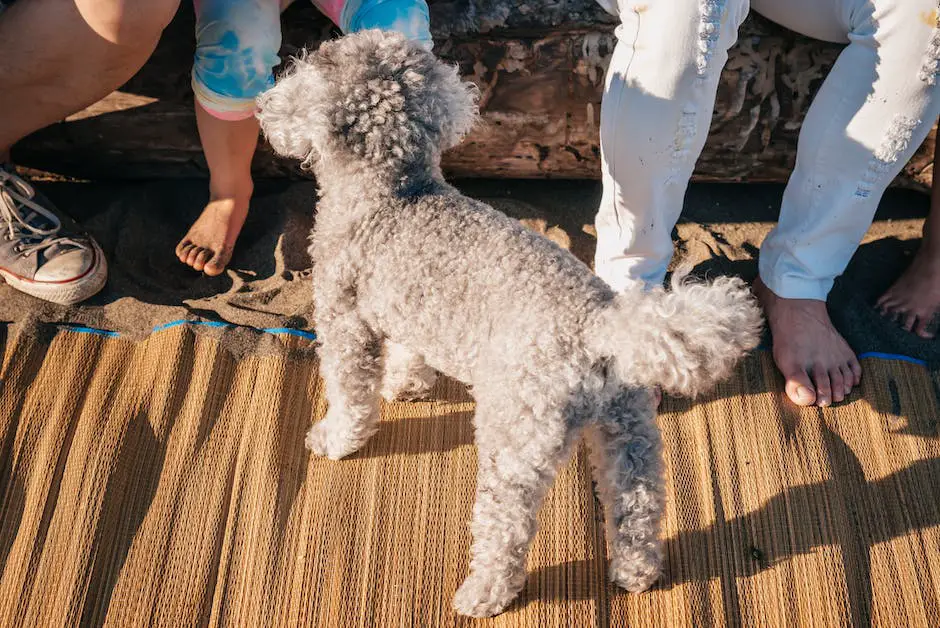
Caring for Different Poodle Coat Types
Diving Deeper into Poodle Coat Types
Poodles are particularly known for their unique coats, distinguishing them from a myriad of other dog breeds. These coats are divided into three categories: the puppy, the adult, and the corded coat. Each one has its own quirks and necessitates particular care and grooming procedures. Comprehending the various Poodle coat types and the most suitable ways to care for them is fundamental to any Poodle enthusiast or owner.
The Puppy Coat
Puppies are born with a soft, fluffy coat that is easy to manage. Compared to adult Poodles, the puppy coat requires less grooming. Even so, brushing should begin early to get the puppy accustomed to grooming routines. Use a soft slicker brush or pin brush to remove knots and keep the coat clean and fluffy. Although the puppy fur is less prone to matting, weekly brushing will ensure it stays healthy and manageable. Bathing can be done approximately every one to two months, and always use a puppy-friendly shampoo to protect their delicate skin.
Transition to the Adult Coat
Once your Poodle reaches the age of around 9 to 18 months, they will begin to transition from the puppy coat to the adult coat. This new coat is denser and curly, prone to matting and tangling if not properly cared for. Daily brushing becomes critical during this stage to avoid any matting and tangling. Bathing should be increased to every three weeks, using a dog shampoo that’s formulated to enhance and protect curly coats.
In terms of drying, it’s best to pat the coat dry rather than rub, as rubbing can lead to tangles. A blow dryer can also be used, but always on the lowest heat setting to prevent skin problems. Regular grooming appointments are recommended for trimming and styling, especially if the coat is kept longer.
The Corded Coat
An alternative for adult Poodles is the corded coat, where the fur is allowed to naturally mat into cords. While this style gives Poodles a distinctive appearance, it requires considerable care to maintain. The cords must be separated regularly to prevent them from forming a large, single mat.
Bathing the corded coat is more challenging due to its thick, dense nature. An effective method is to soak each cord individually, ensuring that they are thoroughly cleaned. Afterward, each cord should be squeezed out to remove as much water as possible before blow drying. Unlike the other coat types, brushing is not an advisable step in maintaining the corded coat.
Selecting the Right Products
The type of brushes and care products you use on your Poodle can greatly affect the health and appearance of their coat. Slicker brushes or pin brushes are generally the best choices for Poodles, due to their ability to detangle without causing damages. For puppy coats, a softer brush might be a better choice.
In terms of shampoo, always choose a product specifically designed for Poodles or curly coated breeds. These formulations have ingredients that cater to the unique needs of these coat types. Some Poodle owners also opt to use coat conditioners to keep the fur soft and prevent matting and tangling.
Conclusion
Knowledge and proficiency in accommodating the unique demands of each Poodle’s distinct coat type are crucial for maintaining your four-legged friend’s crisp, trendy, and irresistible appeal. This approach also guarantees the health of their skin and coat, whilst ensuring their grooming experience is soothing and pleasurable. Be it the low-maintenance puppy fuzz, the voluminous adult coat, or the extraordinary corded version, each demands a special grooming protocol. Retain these pieces of advice as they will come in handy in keeping your Poodle’s coat in perfect condition, irrespective of the stage of its life cycle.
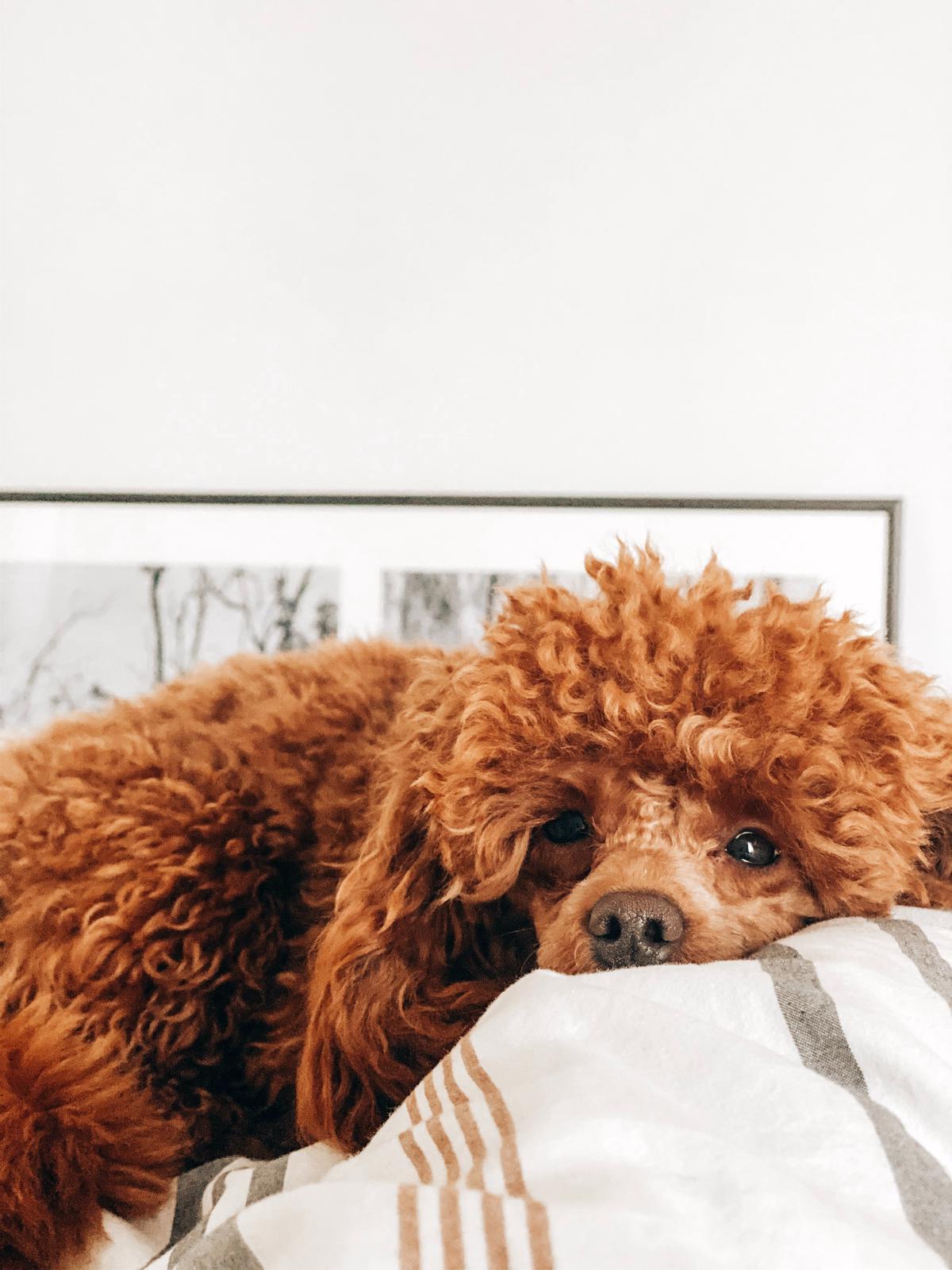
Poodle Coat Types and Health Concerns
Understanding Poodle Coat Varieties
Poodles, a much-loved dog breed, are recognized for their spiralled, heavy, and typically plush coats. These elegant and practical Poodle coats provide shield against harsh weather while creating the breed’s signature look. With proper care, most poodles can flaunt healthy and lustrous coats. Nonetheless, it is crucial for Poodle fans and hobbyists to realize that diverse Poodle coat versions exist, and each of them may pose certain health considerations.
Understanding Poodle Coat Types
Most poodles feature one of three distinct coat types: Curly, Corded, or Hair. A poodle’s coat type can be influenced by a variety of factors, including their genetic makeup and overall health. Curly poodles possess a coat that is tight and thick, resembling the texture of lamb’s wool. Corded poodles, on the other hand, have a coat that forms tight ropelike cords. Hair poodles, as the name suggests, have coats featuring loose, straight hairs that more closely resemble human hair.
Regardless of the coat type, it is crucial to remember that all poodles require regular grooming to maintain the condition and health of their coat. This includes brushing to prevent matting, regular bathing with a high-quality canine shampoo, and, in some cases, professional grooming services.
Health Concerns Associated with Poodle Coat Types
Certain poodle coat types may be more susceptible to specific health issues. For instance, due to the dense nature of curly coated poodles, skin issues such as parasites, fungal infections, and allergies can be more prevalent. These can lead to itchy, irritated skin, and can sometimes result in skin infections if left untreated.
Corded poodles can also suffer from skin issues, particularly if their unique cords are not properly maintained. Due to the hair’s tendency to mat, moisture and dirt can become trapped, potentially leading to bacterial or fungal skin infections.
Hair poodles may encounter fewer skin issues compared to their curly and corded counterparts, but it is still essential to regularly groom and check their coat and skin as their straight hairs can pick up ticks, fleas, and other pests more easily.
Prudent Care for Poodle Coats and Skin
Uncompromising care for your poodle’s coat and skin is the first step towards preserving its appearance and health. Key to this is a steadfast commitment to grooming, irrespective of the poodle’s coat type. A weekly deep-down brushing to untangle knots and to free the coat from minute debris is recommended for every poodle. Incorporating regular baths into your poodle’s routine, about once every three to six weeks tailored to the specific coat type, aids in keeping skin problems at bay.
Moreover, routine visits to your vet can help spot the onset of any health concern. Should any alarming skin symptoms like incessant itching, inflammation, or falling hair be observed, swift veterinary intervention is advised.
The role of a fitting diet in maintaining your poodle’s coat health and safeguarding against health problems cannot be understated. A balanced diet brimming with high-grade protein, and pumped with omega-3 and omega-6 fatty acids can substantially enhance the health and shine of your poodle’s coat.
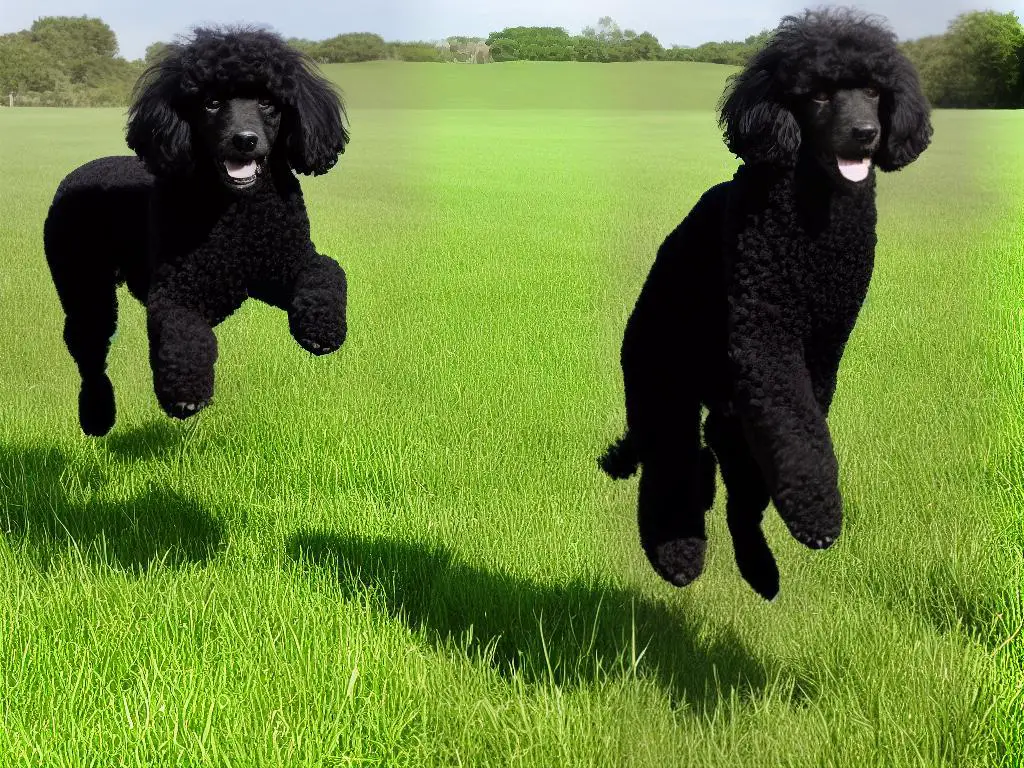
Poodle Coat Types: Breed Standards
Deciphering Poodle Coat Varieties
Poodles boast distinctive, hypoallergenic coats that are not only eye-catching but also pragmatic, and their various types are mainly attributed to the breed’s variation–The Standard, Miniature, and Toy, each of which, although differing in size, exhibit similar traits. In addition to this, the coats, when examined closely, display particularities varying in texture, length and grooming style, leading to their own classifications.
Standard Poodle Coat
The standard poodle boasts a naturally dense and curly coat. The hair grows in tight, compact curls or cords, offering a high degree of protection against environmental elements. Recognized in an array of colors, the standard poodle’s coat can range from black, white, and grey to apricot, chocolate, and cafe-au-lait. A few brindle and sable colored coats are also seen, although they aren’t as common. The trademark look for this variety usually involves a “lion clip,” or a “puppy clip,” where the coat is kept long and the face, throat, feet and base of the tail are cleanly shaven.
Miniature Poodle Coat
The Miniature Poodle’s coat exhibits the same features as that of its standard counterpart – dense, curly, and weather-resistant. However, grooming this variety often involves keeping the coat a bit shorter to highlight the mini poodle’s compact physique. Meticulous grooming is a must to prevent the dense curls from matting. Similar to the standard variety, the coat is usually kept shorter on the face, throat, feet and base of the tail. A neat topknot is also often fashioned for a classic poodle look.
Toy Poodle Coat
The Toy Poodle shares an identical coat type to the Standard and Miniature Poodles but due to its diminutive size, the coat may appear finer and less dense, although still abundant in tight curls or cords. Grooming styles are similar to the ones followed for the Standard and Miniature variety, but extra care should be taken due to the Toy’s smaller size and delicate skin. Toy poodles can sport the spectrum of standard poodle colors, but lighter shades are common and often favored.
Breed Standards Across Various Canine Associations
According to the American Kennel Club (AKC), the breed standard for all poodle varieties regarding their coat is that it should be “naturally harsh, dense and curly” and of “sufficient length to allow judging of the quality.” The Fédération Cynologique Internationale (FCI) prescribes curly or corded coats for all poodle varieties, with the latter looking like long, fine cords. These standards apply across all sizes – be it Standard, Miniature, or Toy.
Why It’s Essential to Grasp Poodle Coat Types
Discerning the various poodle coat types and their related breed standards is paramount for would-be poodle owners, breeders, and aficionados alike. This understanding aids in properly maintaining and caring for these splendid dogs, guaranteeing their optimal health and welfare. It is particularly beneficial for individuals involved in dog show competitions, as set standards are frequently the deciding factors in these events. Being well-informed regarding poodle coat types consequently plays a significant role in making informed decisions, be it in the competition ring or at home.
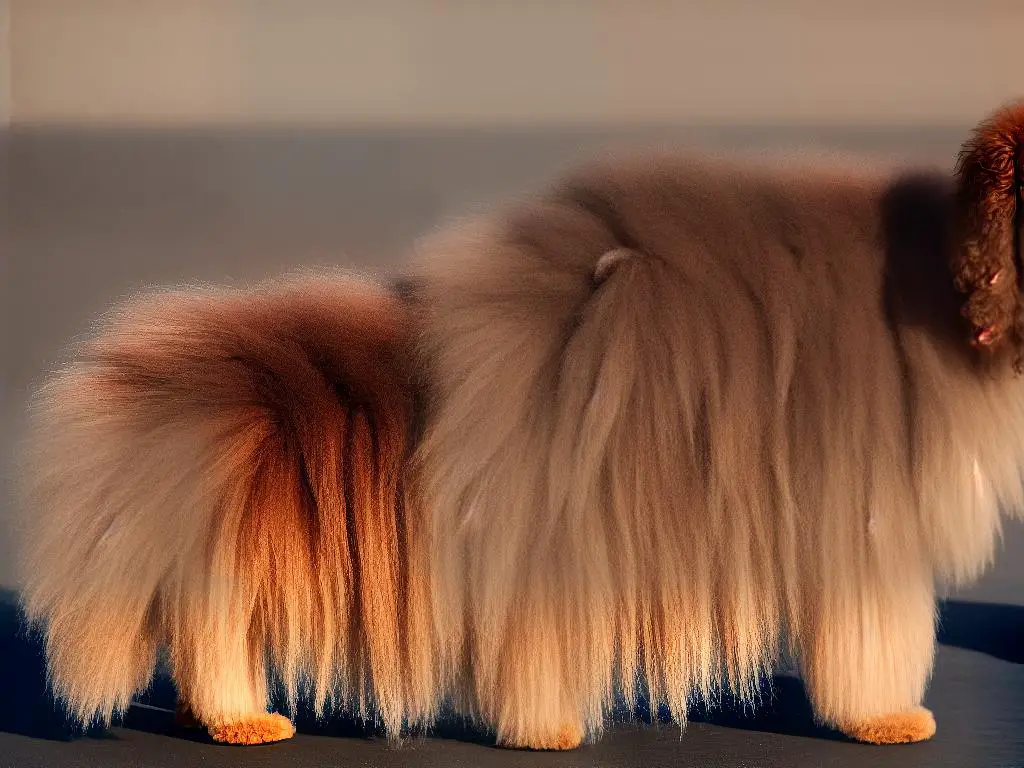
Poodle Coat Types and Lifestyle Impact
Poodles Have Three Official Coat Types:
- curly
- corded
- wavy
Each coat type bears its distinctive charm, specific grooming necessities, and possible health concerns. The type of a poodle’s coat goes beyond mere aesthetics; it can greatly affect the dog’s lifestyle, general well-being, and the level of care responsibilities for the owners.
Curly Coat in Poodles
Poodles with a curly coat have dense, tight curls close to their body. They’re usually associated with the “classic” look of a poodle. These curly-coated beauties are non-shedding, making them an excellent choice for people with allergies. However, the hair on these poodles can quickly become matted if not adequately cared for. Hence, regular grooming sessions, including brushing at least once a week, are required to keep their coat healthy. This intensive care might necessitate more involvement from the owner and possibly the need for professional grooming services.
Corded Coat in Poodles
The corded coat is an exceptional and quite rare sight in poodles. It consists of tightly wound cords hanging from the dog’s body, giving them a unique “dreadlock” look. Maintaining a corded coat is a time-consuming process and requires enormous dedication from the owner. The cords must be carefully separated and cleaned to avoid matting and skin problems. Due to this effort, corded poodles might be best suited for owners who are ready to invest a substantial amount of time in maintaining their coat.
Wavy Coat in Poodles
Poodles with a wavy coat, also known as the “improper coat,” often present with a soft, wavy hair, unlike the dense curls or cords found in other poodles. They are primarily seen in mixed breeds. This coat type isn’t as high-maintenance as the curly or corded varieties. However, it does shed more, making it less ideal for people with allergies.
Potential health issues can depend on the coat type of a poodle. For instance, poodles with corded coats may be more prone to skin issues due to the challenge of keeping their skin clean and aired. On the other hand, curly and wavy coated poodles are prone to ear infections due to their heavier coats and floppy ears. Hence, the coat type can not only impact the poodle’s physical health but also their comfort levels.
The activity levels in poodles can also be influenced by the type of coat. Poodles with heavy, corded coats might experience discomfort during extreme temperatures and might be less willing to engage in physical activities during such periods. Curly and wavy coated poodles, on the other hand, could be more active, provided their coat is kept clean and free of matting.
In a nutshell, the coat type of a poodle not only affects its aesthetic charm but also its comfort, behavior, and overall lifestyle. As an owner, understanding the diverse impacts of different coat types can help you provide the most fulfilling life for your poodle and ensure that you’re prepared for all the responsibilities that come with each unique coat type.
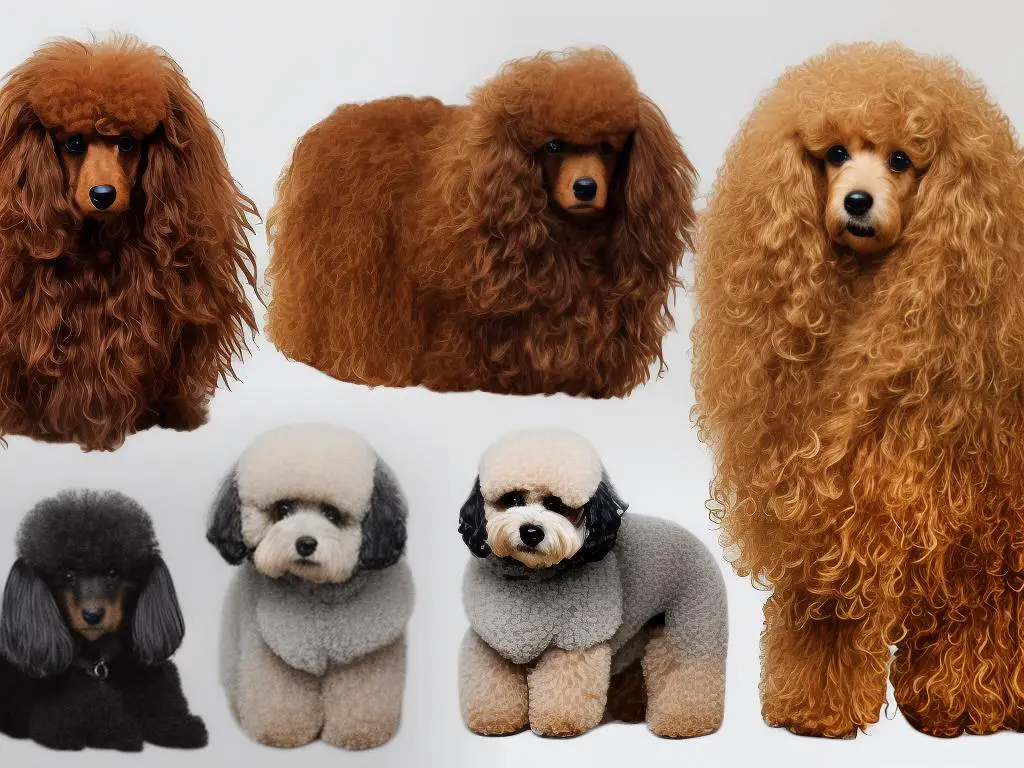
Understanding the different types of Poodle coats and their implications is integral to ensuring the well-being and happiness of these unique dogs. The care and attention required can vary significantly between the coats and could influence the lifestyle of the poodle and the responsibilities of the owner. From identifying potential health problems associated with certain coats to choosing the right grooming techniques and products, we hope that this exploration has given you valuable insights. With this knowledge at hand, you can ensure your poodle, whether they have a standard, miniature, or toy coat, gets the tailored care they deserve.
